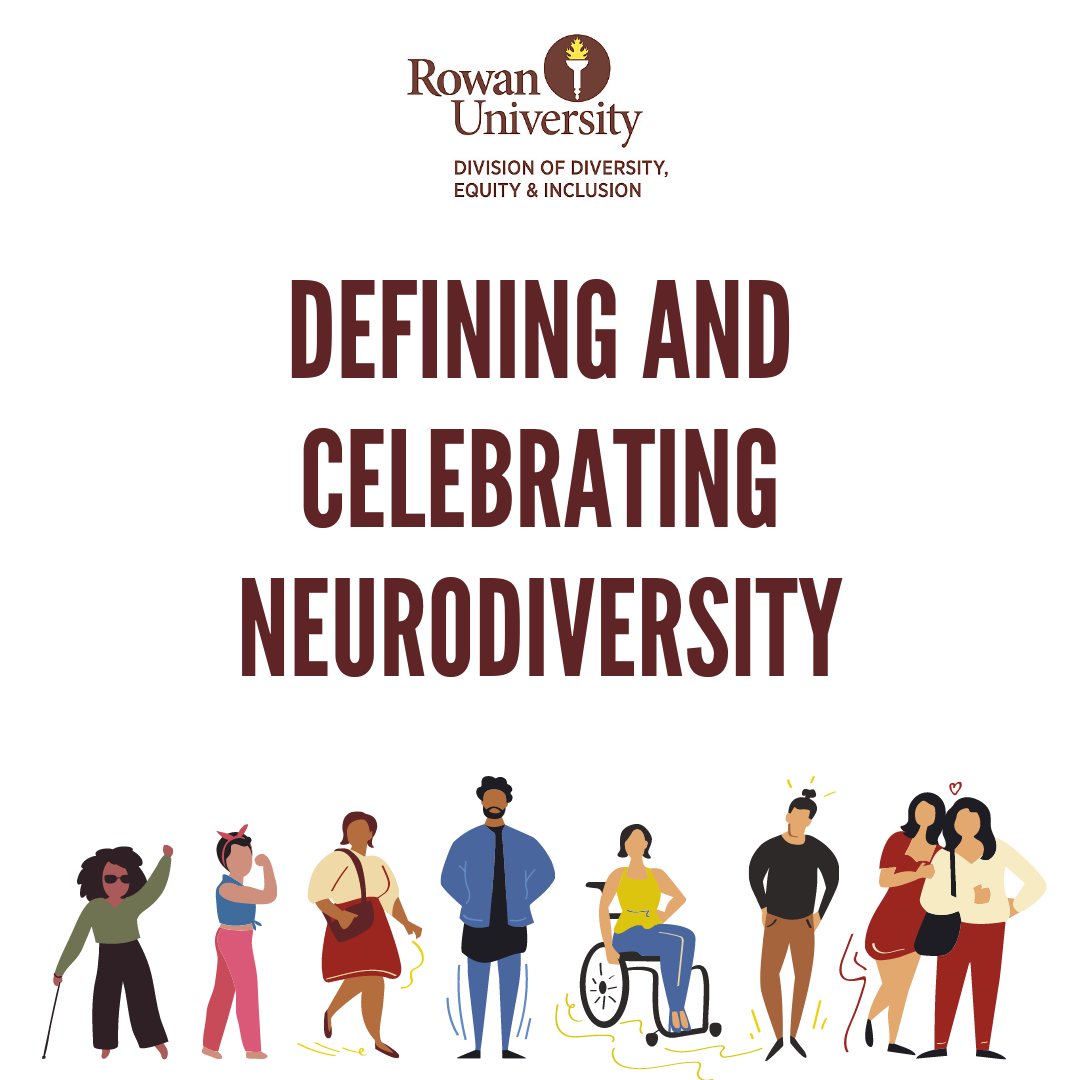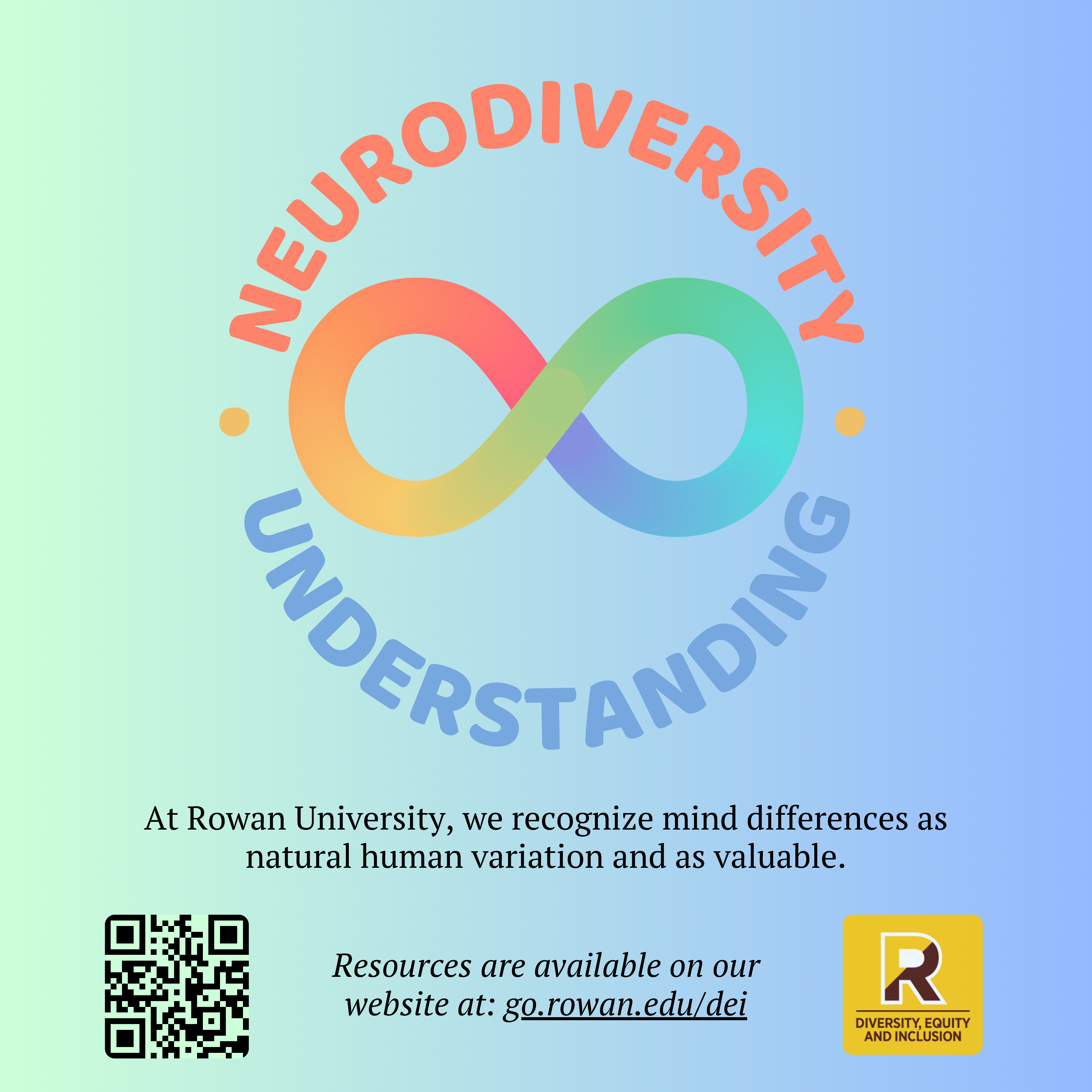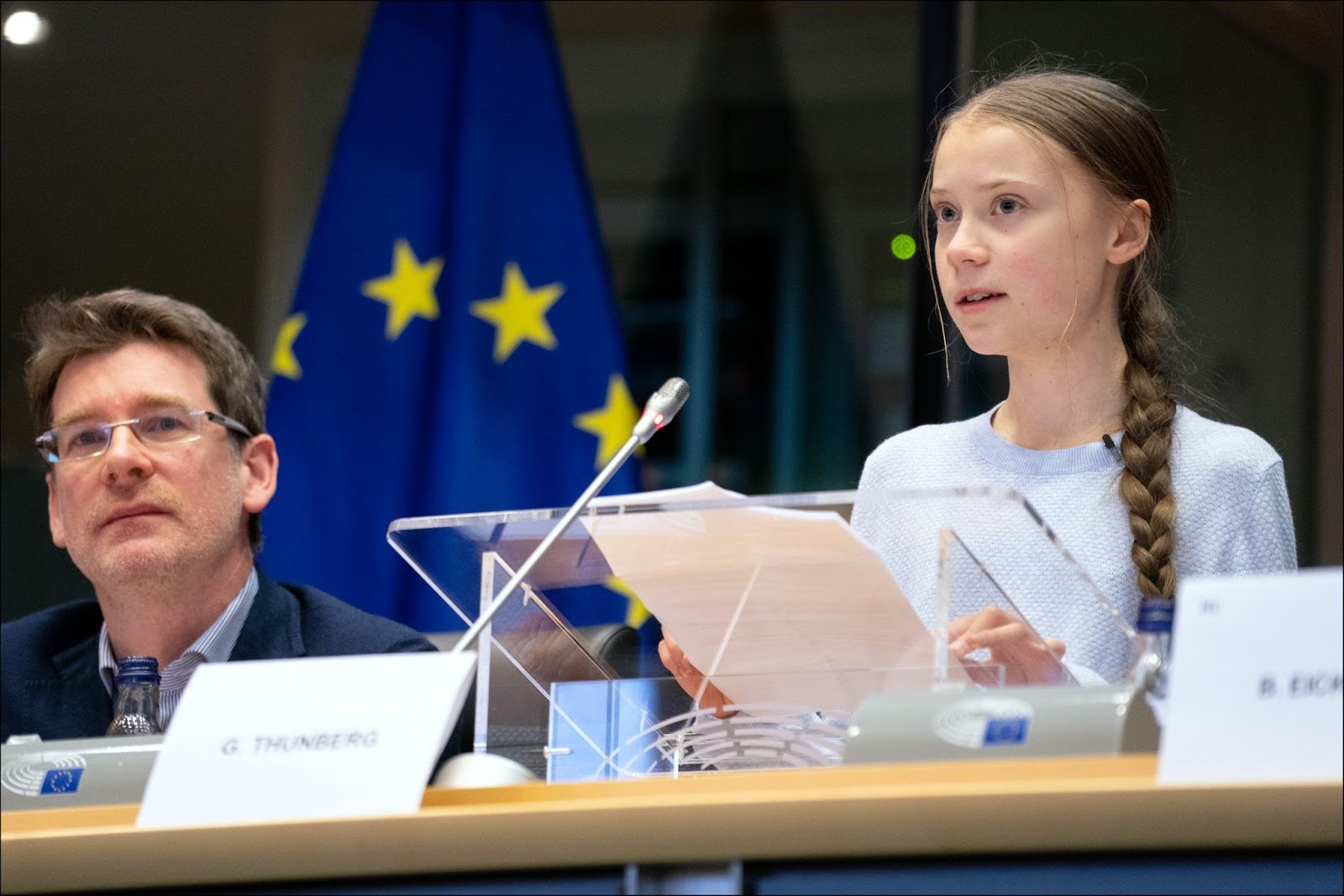Written by:
Arianna Adan, Student of Journalism (Undergraduate, Junior), Ric Edelman College of Communication and Creative Arts (CCCA) at Rowan University;
Patricia Fortunato, Content and Program Manager, Clinical Research and Grants, NeuroMusculoskeletal Institute (NMI), Rowan University School of Osteopathic Medicine (RowanSOM), Southern New Jersey Medication for Addiction Treatment Center of Excellence (MATCOE); and
Gabby McAllaster, Ph.D. Candidate in Education at Rowan University and Doctoral Graduate Coordinator for Rowan University's Division of Diversity, Equity, and Inclusion (DEI)
Thank you to Drs. Amy Accardo, Casey Woodfield, Justin Freedman, and Brent Elder at the Rowan University College of Education (COE) who helped to develop content and provided further resources for this article.
This article contains visual content updates as of February 15, 2024.

Image Alternative Text: The Rowan University logo with the Rowan torch is located at the top, with the text, "Division of Diversity, Equity, and Inclusion Defining and Celebrating Neurodiversity." Depicted at the bottom are eight diverse people.
Brief History of Neurodiversity
Neurodiversity is the full range of variations in cognition, learning, behavior, and socialization that exists within the entire general population. Individuals who identify as neurodivergent may include those who have "a mind that functions in ways which diverge significantly from the dominant societal standards of 'normal.'"
The neurodiversity movement is a social justice movement based on the philosophy that different ways of thinking and behaving should be embraced, and are natural variations of being human. The term was coined by an autistic self-advocate and scholar, Judy Singer, in the late 1990s. Singer recognized that those with developmental, intellectual, psychiatric, or learning dis/abilities, now recognized as neurodivergent, were marginalized in society. As such, the neurodiversity movement recognizes that neuro differences are a socially-constructed category, similar to race, gender, sexuality, or dis/ability* status, etc. Neurodiversity advocates acknowledge the lived experiences of neurodivergent people as they navigate a society that is not designed with their ways of being at the center, and therefore, advocates promote education and social support systems, inclusive programming, and accommodations. Some examples include communication and assistive technologies, occupational training, and independent living support. The movement emphasizes the goal of embracing neurodiversity and providing intentional support so that individuals can fully participate in society.
*The term dis/ability, (spelled with the slash) is used intentionally to illustrate how ability and disability are fluid rather than a static identity; individuals may exhibit both ability and disability in relation to different social environments. The use of the term disability (spelled without the slash) suggests that a person is represented or identified by what they cannot do, rather than what they can do.
Terms and Language Guidance for Continued Learning
- Ableism: Ableism is discrimination or prejudice, whether intentional or unintentional, against people with disabilities.
- Accessible: Accessible spaces and programs are made to be inclusive, and generally don't require accommodation. Creating accessible spaces and programs should not be limited to a response to disability.
- Accommodation: An accommodation is an adjustment, whether in the classroom or workplace, that ensures that people with disabilities can complete the same required tasks and functions as people without disabilities.
- Americans with Disabilities Act (ADA): The ADA is a federal civil law designed to ensure that people with disabilities are fully included in society and protected from discrimination.
- Identity-First Language (IFL): IFL includes terms such as "disabled person," which emphasizes the disability as an identity. The language was born from a countermovement in response to person-first language, wherein some disabled people recognized that their disability is part of who they are and not necessarily a term from which to distance oneself. As such, many autistic and/or neurodivergent people prefer IFL.
- Invisible Disability: An "invisible disability" is a disability that is not immediately apparent. These disabilities can be physical, mental, or neurological conditions that limit a person's daily functions. They are also sometimes referred to as "hidden disabilities."
- Neurodivergent: The term was coined by Kassiane Asasumasu, a multiple neurodivergent neurodiversity activist, and refers to having a brain that functions in ways that diverge significantly from the dominant societal standards of "normal." For instance, having developmental, intellectual, psychiatric, or learning disabilities. Individuals identifying as neurodivergent may include those with a wide range of disability labels including but not limited to attention-deficit/hyperactivity disorder (ADHD), autism spectrum disorder (ASD), dyscalculia, dyslexia, dyspraxia, obsessive-compulsive disorder (OCD), and Tourette syndrome.
- Neurodiversity: Neurodiversity is the full range of variations in cognition, learning, behavior, and socialization that exists within the population.
- Neurotypical: The term refers to individuals whose ways of thinking and being are aligned with social expectations. The term may also be used to reference people who are not identified as having developmental, intellectual, psychiatric, or learning disabilities.
- Person-First Language (PFL): PFL includes terms such as "person with a disability," which emphasizes that the person is more important than the disability. PFL was developed as a way of showing respect. Some people with disabilities prefer PFL while others prefer IFL.
- Universal Design: This is a term that refers to the design and composition of an environment so that it can be accessed, understood, and used to the greatest extent possible by all people regardless of their age, size, ability, or disability.
- Wheelchair User: This is a term that refers to a person who uses a wheelchair for mobility. Use this term instead of saying that a person is "wheelchair-bound" or "confined to a wheelchair."
- Section 504 of the Rehabilitation Act: This is a federal civil rights law that ensures that people with disabilities have equal access to education.
Important Aspects of Neurodiversity
"Nothing about us without us." Many neurodiversity advocates have been critical of the ways in which policy and decision-makers have excluded and silenced neurodivergent individuals and individuals with dis/abilties from discussions that impact their lived experiences. For example, organizations such as Autism Speaks, have received criticism concerning the lack of representation of autistic leadership, fundraising techniques that draw on stigma, and the symbolic imagery of a puzzle piece. When seeking to advance neurodiversity equity and inclusion, agencies, policymakers, and educators must center neurodivergent and dis/abled identities within decision-making and social justice initiatives, as they are the experts of their lived experiences.
The rainbow infinity symbol is often used to denote neurodiversity and autism. Of note, autistic self-advocates do not embrace the puzzle piece which has a negative connotation to discriminatory history.

Image Alternative Text: Depicted is a rainbow infinity symbol in soft shades of yellow, orange, red, green, and blue, against a gradient background in soft shades of green and blue. The text surrounding the symbol reads, "Neurodiversity Understanding" and below the symbol reads, "At Rowan University, we recognize mind differences as natural human variation and as valuable." The Rowan University Division of Diversity, Equity, and Inclusion (DEI) logo and website link to "go.rowan.edu/dei" are positioned at the bottom of the graphic.
Click here to download the graphic.
Address deficit paradigms. Throughout history and social contexts, neurodiversity has been viewed from a deficit perspective, with the connotation that neurodivergent individuals are less than neurotypical individuals. Deficit-focused paradigms and perspectives perpetuate harmful stereotypes and assumptions concerning the population, regarding individuals in terms of their perceived deficiencies, dysfunctions, and limitations. Rooted in deficit paradigms is often the medical model, which views neurological differences as a medical condition to be "fixed." For example, the medical model utilizes labels such as "high-functioning autism" and "low-functioning autism." Neurodiversity is rooted in the social model, which shifts the focus to address systemic barriers that historically have resulted in inequitable learning opportunities and outcomes.
Support neurodiversity in the university environment. The neurodiversity paradigm is the perspective that there are diverse learners with neurological differences, which should be recognized, embraced, and celebrated. The neurodiversity paradigm also seeks to advance accessibility, resources, choices, and inclusivity. For example, educational environments may hinder inclusion for neurodivergent people, such as spaces that do not account for sensory processing differences, or experiences with deficit perspectives and attitudes from educators, colleagues, or students. Therefore, it is imperative for university environments to promote inclusion. One example of fostering more inclusive environments is through the principles of Universal Design for Learning (UDL). UDL is a research-based teaching and learning approach that uses diverse methods to remove barriers to learning and to provide all students opportunities to succeed. UDL offers inclusivity, flexibility, and creativity to cultivate every student's strengths and needs.
Examples of UDL include and are not limited to closed captions, automatic doors, and assistive technology. The approach provides numerous formats to share information, including hands-on, audio, and text, as well as formats for testing including oral presentations and group projects. This chart explores the differences between traditional educational approaches and UDL. Faculty, administrators, staff, and students should all study and utilize UDL to create contexts that honor and support the range of neurodiverse needs on campus. This process can also benefit neurotypical students. Currently, the UDL framework is undergoing updates, to further address systemic barriers that exist and result in inequitable learning opportunities and outcomes.
Important Figures to the Neurodiversity Movement
Solange Knowles is an American songwriter, singer, and actress. She has shared that "she's always been full of energy and claims that sometimes her sporadic speech and effervescence led people to believe she was on drugs" and that she "was diagnosed with ADHD twice. I didn't believe the first doctor who told me and I had a whole theory that ADHD was just something they invented to make you pay for medicine, but then the second doctor told me I had it."

Image Alternative Text: Photograph of Solange Knowles, by Neon Tommy. Solange Knowles is singing with a microphone with a stage light in the background.
Solána Imani Rowe, known professionally as SZA, is an American songwriter and singer. She has shared the difficulty of living with ADHD. "It's a little embarrassing. Especially when I'm nervous, my mind is running a mile a minute. My ADHD speaks for me before I can speak for me. If I'm in public and people walk up to me — because I've never been famous before — I've probably lost something by the time everyone has left me. I'm easily disoriented. But I'm getting a hold on that."

Image Alternative Text: Photograph of SZA, by Erin Cazes for The Come Up Show. SZA is smiling and singing into a microphone with a big letter "C" in the background. There is a person with their hair in a bun and glasses to the side of SZA with a guitar.
Simone Biles is an American gymnast. In 2016, hackers distributed her confidential medical records and enacted a smear campaign in an attempt to discredit her credentials. However, Biles used the leak to communicate a powerful message about mental health, prescription medication, stigma, and athletics. She wrote on Twitter, "Having ADHD, and taking medicine for it is nothing to be ashamed of nothing that I'm afraid to let people know."

Image Alternative Text: Photograph of Simone Biles by Fernando Frazão/Agência Brasil. Simone is smiling with a gold medal around her neck, as she waves to the audience.
Greta Thunberg is a Swedish environmental activist. She is known for fearlessly challenging powerful world leaders to address climate change. She openly disclosed in her TEDx Talk in November 2018, "I was diagnosed with Asperger's syndrome, OCD, and selective mutism. That basically means I only speak when I think it's necessary." Thunberg does not view herself as having a medical illness; rather, she has called it a "superpower."

Image Alternative Text: Photograph of Greta Thunberg CC-BY-4.0. Source: EP. (Greta is delivering a speech, sitting with paper in her hands, and a microphone. Her hair is braided to the side. To the left, is an older person wearing glasses.)
Rowan University Community of Support
- Neurodiversity Faculty and Staff Affinity Group: All Rowan University faculty and staff are invited to join the Neurodiversity Faculty and Staff Affinity Group, which strives to engage across departments, Rowan University, and the community to strengthen relationships and further efforts of diversity, equity, and inclusion. The affinity group is open to all current and interested faculty and staff.
- Rowan University Disability Resources: Disability Resources provides accommodations and assistance to students with various documented disabilities in accordance with Section 504 of the Rehabilitation Act of 1973 and the Americans with Disabilities Act (ADA) of 1990.
- For all student complaints involving discrimination and harassment, please visit go.rowan.edu/titlevi
The Center for Neurodiversity at Rowan University
Rowan University Professional Development
- Please utilize the following online learning resources: Neurodiversity Informational Series, and Autism and Neurodiversity in the Inclusive Setting, by Dr. Amy Accardo
- In November of 2019, the Rowan University Division of DEI established the Neurodiversity Task Force comprised of faculty and staff from all three campuses, students, community members, and parents, to examine current resources for neurodivergent faculty, staff, and students, develop recommendations for campus-wide improvement, and to research and explore the opportunity to establish a Center for Neurodiversity. Here are the survey and focus group results.
- The Division of DEI is proud to present the fully virtual Inclusive Pedagogy and Practices Certificate Program. This is a professional development opportunity for teaching professionals and professional staff interested in learning more about developing an inclusive educational environment. This certificate program is an excellent enhancement to your personal and professional development related to making our university a welcoming and accessible place for everyone. Please note, completion of the DEI Certificate is a pre-registration requirement. Please find more information here.
Resources for Continued Learning
Websites:
Articles:
- Austin, R. D., & Pisano, G. P. (2017). Neurodiversity as a Competitive Advantage. Harvard Business Review, 95(3), 96-103.
- Heelan, A., Halligan, P., & Quirke, M. (2015). Universal Design for Learning and Its Application to Clinical Placements in Health Science Courses (Practice Brief). Journal of Postsecondary Education and Disability, 28(4), 469-479.
- Dolmage, J. (2015). Universal Design: Places to Start. Disability Studies Quarterly, 35(2).
- Spotlight: Neurodiversity: Yes, Advocate...but Also, Celebrate!. Stanford Medicine.
Videos:
- TED. (2015, March). Steve Silberman: The Forgotten History of Autism [Video]. YouTube. youtube.com/watch?v=_MBiP3G2Pzc
Podcasts:
- Williams, L., & Peterson, T. (Hosts). (2018, January 29). Invisible Disabilities (Ep 17) [Audio Podcast Episode]. In Disability Visibility Project.
- Lee, J., & Lin, N. (Hosts). (2020–Present). Two Addys and a Coffee, Please. [Audio Podcast Series].
Books:
- Prizant, B. M., & Fields-Meyer, T. (2015). Uniquely Human: A Different Way of Seeing Autism. Simon and Schuster.
- Silberman, S. (2015). Neurotribes: The Legacy of Autism and the Future of Neurodiversity. Penguin.
- Pollak, D. (Ed.). (2009). Neurodiversity in Higher Education: Positive Responses to Specific Learning Differences. John Wiley & Sons.